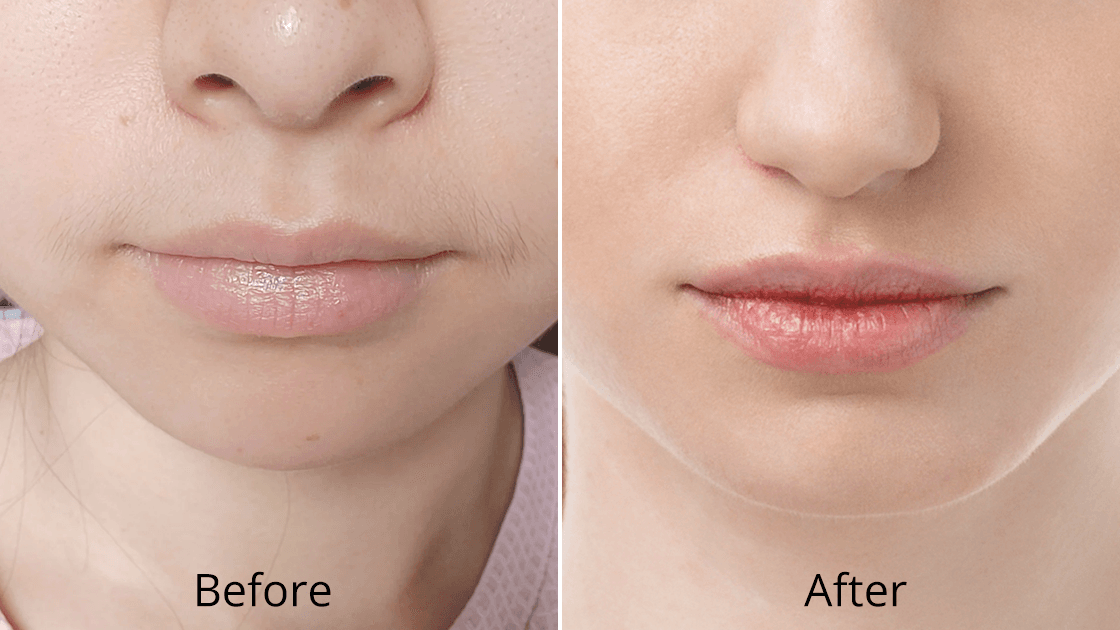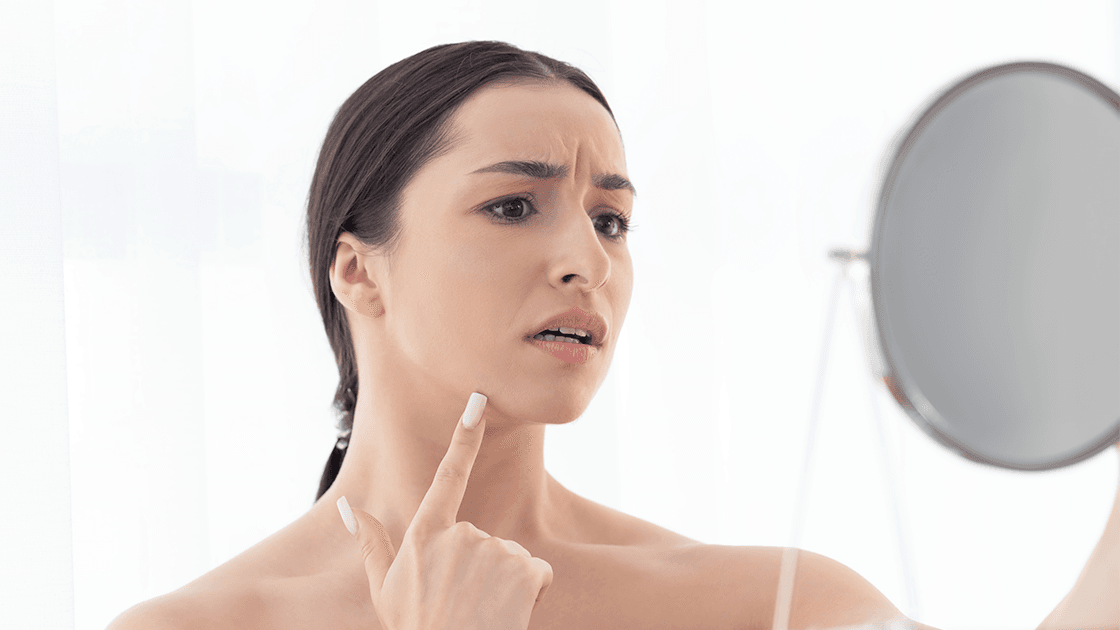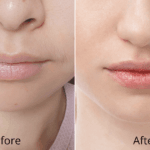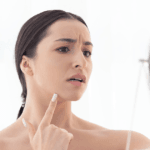1. Introduction: The Summer Hair Removal Dilemma
Summer brings the promise of beach days, pool parties, and sleeveless outfits, but it also presents a unique challenge for those considering laser hair removal. The increased sun exposure, vacation plans, and desire for smooth skin create a complex decision-making process that requires careful consideration of both safety and effectiveness.
1.1 Why Laser Hair Removal Is So Popular
Laser hair removal has revolutionized the beauty industry by offering a semi-permanent solution to unwanted hair growth. This FDA-approved treatment works by targeting melanin in hair follicles through selective photothermolysis, where concentrated light energy converts to heat, effectively damaging the follicle’s ability to produce hair. The process requires multiple sessions due to the natural hair growth cycle, with anagen (active growth) phase being the most responsive to treatment. Modern diode laser systems operate at wavelengths of 755-810nm, providing optimal penetration depth while minimizing epidermal damage. The popularity stems from its long-lasting results, reduced ingrown hairs, and convenience compared to traditional methods like shaving or waxing.
1.2 Why Tanned Skin Affects Laser Hair Removal Results
The relationship between skin pigmentation and laser efficacy is rooted in the physics of light absorption. Melanin, the pigment responsible for both hair color and skin tone, absorbs laser energy indiscriminately. When skin is tanned, increased melanin concentration in the epidermis competes with hair follicle melanin for laser energy absorption, creating several complications. This competition reduces the laser’s selectivity, potentially causing epidermal heating that can lead to burns, hyperpigmentation, or hypopigmentation. The Fitzpatrick skin classification system helps practitioners assess treatment suitability, with darker skin tones requiring longer wavelengths and modified parameters. Additionally, recent sun exposure can cause photosensitivity reactions, inflammation, and altered melanin distribution, making accurate treatment assessment more challenging.
1.3 What This Blog Covers
This comprehensive guide examines the complexities of épilation au laser during summer months, addressing safety concerns, effectiveness considerations, and practical strategies for successful treatment. We’ll explore evidence-based recommendations from dermatologists and laser specialists, discuss the physiological mechanisms that make summer treatments more challenging, and provide actionable protocols for minimizing risks. Whether you’re a first-time client or continuing an established treatment plan, this article will equip you with the knowledge needed to make informed decisions about summer laser hair removal while prioritizing both safety and optimal outcomes.
2. Can You Do Laser Hair Removal in the Summer?
The question of summer laser hair removal isn’t simply answered with a yes or no—it requires a nuanced understanding of laser physics, skin physiology, and individual risk factors. While summer treatments are possible, they demand heightened precautions and modified protocols to ensure safety and effectiveness.
2.1 Yes, But with Precautions
Summer laser hair removal is feasible when proper precautions are implemented and maintained throughout the treatment period. The key lies in understanding that laser parameters must be adjusted based on skin condition, sun exposure history, and individual phototype. Qualified practitioners can perform treatments year-round by modifying fluence (energy density), pulse duration, and cooling protocols. Pre-treatment assessment becomes crucial, including evaluation of recent sun exposure, current skin tone compared to baseline, and any signs of photoaging or solar damage. Patients must commit to strict sun avoidance protocols, which may be challenging during summer months but are essential for treatment success. The decision should always be made collaboratively between patient and practitioner, considering lifestyle factors, vacation plans, and ability to maintain post-treatment care requirements.
2.2 Why Skin Tone and Sun Exposure Matter
The correlation between skin tone and laser safety is fundamental to understanding summer treatment challenges. Diode lasers operate on the principle of selective photothermolysis, where energy absorption should be maximized in the target chromophore (hair follicle melanin) while minimizing absorption in competing chromophores (epidermal melanin). When skin is tanned, this selectivity decreases significantly, increasing the risk of adverse events. Recent studies indicate that even minimal sun exposure can increase epidermal melanin content by 15-30%, effectively reducing the contrast between hair and skin pigmentation. This reduced contrast necessitates lower energy settings, potentially compromising treatment efficacy. Additionally, UV-induced inflammation can alter skin barrier function, making it more susceptible to laser-induced complications such as prolonged erythema, vesicle formation, or post-inflammatory hyperpigmentation.

2.3 What the Experts Recommend
Leading dermatologists and laser specialists emphasize a conservative approach to summer treatments, prioritizing patient safety over convenience. The American Society for Dermatologic Surgery recommends conducting patch tests before resuming treatments after any sun exposure, regardless of the duration. Experts advocate for extended consultation periods during summer months, allowing thorough assessment of skin changes and patient education about increased risks. Many practitioners implement modified treatment protocols, including reduced fluence levels, increased cooling duration, and extended intervals between sessions. The consensus among experts is that while summer treatments are possible, they require enhanced vigilance, stricter patient selection criteria, and comprehensive informed consent processes. Some specialists prefer treating only areas with minimal sun exposure during peak summer months, reserving sun-exposed areas for fall and winter treatments.
3. Risks of Laser Hair Removal During Summer
Understanding the elevated risks associated with summer laser hair removal is essential for making informed treatment decisions. These risks extend beyond immediate side effects to include long-term complications that may affect both cosmetic outcomes and skin health.
3.1 Common Summer Side Effects After Laser Hair Removal
Laser hair removal in summer increases the likelihood of side effects. Immediate reactions like redness and swelling may last 24–48 hours, longer than usual. Patients may feel more heat or discomfort due to the combination of laser-induced inflammation and summer heat. Sweat and humidity can lead to folliculitis or even skin infections if post-care is inadequate. In rare cases, paradoxical hypertrichosis—where fine hairs grow instead of disappearing—can occur if laser settings are too low to avoid damaging tanned skin. Healing may also take longer because of warmer temperatures and greater sun exposure. Practitioners should carefully monitor skin response, especially in sensitive or high-risk areas.
3.2 Higher Risk of Hyperpigmentation
Hyperpigmentation is the top concern for summer treatments, especially in skin types III–VI. UV exposure after laser sessions can trigger melanocyte activity, causing dark patches (PIH) that may take months to fade. Even minimal sun—through windows or brief outdoor exposure—can increase the risk. Diode lasers are safer for darker skin tones but still carry risk if used on tanned skin. Studies show a 40–60% rise in PIH during summer. Prevention includes using SPF 50+, avoiding sun before and after treatment, and possibly applying lightening agents. Once PIH occurs, treatments like peels or pigment lasers may be needed for resolution.
3.3 Why Pre- and Post-Care Are Even More Critical
Pre- and post-care protocols are vital for safe laser hair removal in summer. Patients must avoid sun exposure for 4–6 weeks before treatment and use SPF 30+ daily. This helps fade tans and prevent melanin buildup. After treatment, cooling the skin and applying anti-inflammatory products are essential. Sun avoidance for at least 2–4 weeks post-session is non-negotiable. Even incidental sun exposure—like through a car window—can cause complications. Wearing hats, long sleeves, and scheduling sessions during low-UV hours are key. Skipping these steps raises the risk of burns, pigment changes, and poor results, making diligent care essential.
4. How to Stay Safe with Summer Laser Hair Removal
Implementing comprehensive safety protocols is paramount for successful summer laser hair removal. These strategies require both clinical expertise and patient commitment to maintain throughout the treatment period.
4.1 Choose the Right Laser Device for Your Skin Tone
Choosing the correct laser is crucial for safe summer treatments. Diode lasers at 810nm are ideal, offering deep penetration with minimal surface heating—important for tanned or darker skin tones. These devices balance melanin absorption with epidermal protection, reducing the risk of burns or hyperpigmentation. Advanced models feature contact cooling or dynamic cooling systems, which shield the skin during treatment. Practitioners should also look for safety tools like skin tone sensors, temperature monitors, and adjustable pulse settings. For darker or sun-exposed skin, lower energy levels and longer pulse durations are often used. Dual-wavelength systems may be helpful for tailoring treatments to individual needs. Ultimately, matching the right laser to the patient’s skin type is key to both safety and effectiveness in summer hair removal.
4.2 Follow a Strict Sun Avoidance Routine
Strict sun avoidance is essential for safe laser hair removal during summer. Start avoiding sun 4–6 weeks before treatment and continue for at least 2–4 weeks after. This includes avoiding direct sunlight, reflected UV (from water or glass), and even exposure through light clothing or windows. Daily SPF 30+ should be applied and reapplied every 2 hours during outdoor time. Physical barriers like wide-brimmed hats, long sleeves, and umbrellas are equally important. Limit outdoor activities to early mornings or evenings, and avoid peak UV hours (10 AM–4 PM). Even minimal tanning increases risk and reduces treatment effectiveness. Consider vitamin D supplements during extended sun avoidance periods. This level of care is not optional—it’s necessary for safe, successful treatment.
4.3 Best Time to Schedule Laser Sessions in Summer
Timing laser sessions strategically helps reduce UV risks. The best times are early morning (before 10 AM) or late afternoon (after 4 PM), when UV intensity is lower. Weekday treatments, especially Thursdays or Fridays, allow patients to recover indoors over the weekend. Sessions should avoid dates near beach trips or outdoor events. Summer treatments often require extended intervals—6–8 weeks instead of the usual 4–6—to allow full healing and lower cumulative irritation. Practitioners may also consider weather patterns, scheduling sessions during overcast or cooler periods when possible. Balancing treatment plans with lifestyle and sun exposure patterns greatly improves safety and results.
4.4 Wear SPF Religiously
Sunscreen is non-negotiable during laser hair removal in summer. Apply broad-spectrum SPF 30+ at least 30 minutes before sun exposure and reapply every 2 hours, regardless of activity. Choose sunscreens with both chemical and physical blockers—zinc oxide and titanium dioxide offer immediate, reliable protection. Water-resistant formulas are essential due to sweat, even without swimming. Use about 1 ounce for full-body coverage and don’t skip areas adjacent to treated zones. Educate patients on sunscreen limitations: too-thin application, missed spots, or forgetting reapplication can all reduce protection. In high-risk environments like beaches or high altitudes, combine SPF with protective clothing and strict shade-seeking behavior.
5. Areas That Are Safer to Treat in Summer
Strategic area selection for summer laser hair removal can significantly reduce risks while maintaining treatment progress. Understanding which body regions are most suitable for summer treatments helps optimize both safety and patient satisfaction.
5.1 Underarms and Bikini Line
The underarms and bikini line are ideal for summer laser hair removal due to their low sun exposure. These areas are usually covered by clothing and retain consistent skin tone year-round, allowing for stable laser settings. Coarse, dark hair in these regions also responds well to laser treatment, offering high contrast even during summer months. Post-treatment care is easier because there’s less risk of accidental sun exposure. However, summer humidity and sweat may increase the risk of irritation or folliculitis. To prevent issues, patients should use gentle antimicrobial cleansers and wear breathable, moisture-wicking fabrics. While healing may take slightly longer due to friction, especially in the bikini area, serious side effects are rare with proper hygiene and care.
5.2 Avoid Treating Sun-Exposed Areas Like Face or Arms
Treating areas frequently exposed to sunlight—like the face, arms, or shoulders—during summer carries higher risk and is usually discouraged. These regions experience more UV exposure and pigmentation shifts, making laser settings harder to calibrate safely. Even with sunscreen, it’s difficult to fully protect these areas from sunlight, especially during outdoor activities. This increases the chances of hyperpigmentation or burns. The face is particularly sensitive, and complications are more visible and harder to conceal. Practitioners often recommend waiting until fall or winter to treat these areas, when UV intensity is lower and sun avoidance is easier. If treatment can’t be postponed, patients must follow strict pre- and post-care protocols to reduce risks.
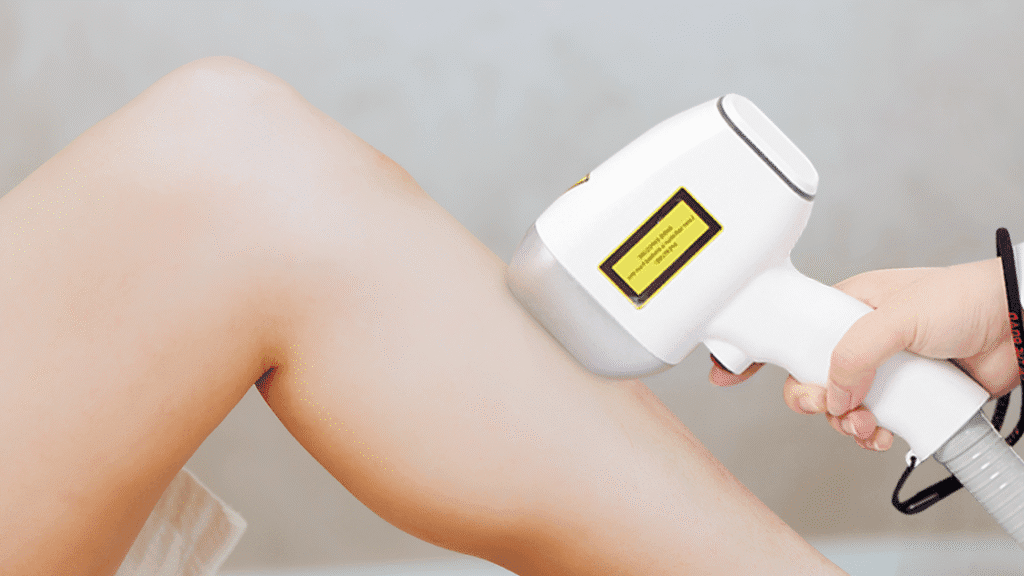
6. Pros and Cons of Summer Laser Hair Removal
A balanced evaluation of summer laser hair removal requires careful consideration of both advantages and disadvantages, helping patients make informed decisions based on their individual circumstances and priorities.
6.1 Pros: Beat the Rush, Long-Term Prep
Easier appointment scheduling: Summer has lower demand, offering more flexibility and better availability.
Head start on results: Begin sessions now to enjoy smoother skin by next summer.
Extended daylight hours: Make it easier to manage pre- and post-care around a flexible summer schedule.
Ideal for some skin types: Darker skin tones with dark hair maintain good contrast for effective treatment.
Psychological motivation: Seeing progress during swimsuit season boosts confidence and adherence to treatment.
Great for underarms and bikini: Perfect time to treat covered, high-impact areas when most relevant for summer.
6.2 Cons: More Rules, More Caution
Strict sun avoidance needed: May limit beach trips, outdoor sports, and social plans.
Higher complication risk: Sun exposure increases the chances of burns, pigmentation, and irritation.
Reduced treatment intensity: Lasers may be used at lower settings to protect the skin, slowing results.
More lifestyle restrictions: Requires careful planning, SPF use, and protective clothing during the entire process.
Healing challenges: Summer heat, sweat, and humidity raise the risk of infections and prolong recovery.
Treatment fatigue: Constant caution and maintenance may feel exhausting, especially for active individuals.
6.3 Expert Verdict: Laser Hair Removal in Summer Can Be Safe
Dermatologists and laser specialists agree that laser hair removal in summer can be safe—but only with strict precautions. Success depends on the right patient selection, modified treatment protocols, and committed sun protection. Diode lasers with advanced cooling systems are preferred for their safety and effectiveness on sun-sensitive skin. Treatments should be individualized based on skin type, lifestyle, and ability to avoid UV exposure. Experts recommend frequent follow-ups during summer to monitor skin response and ensure compliance. However, not all patients are ideal candidates—those with darker skin tones, pigment disorders, or limited ability to avoid sun should consider postponing. Education is crucial for both patient and provider. When performed by experienced practitioners following tailored protocols, summer laser treatments can be both safe and effective. Still, patients must weigh the added risks and responsibilities before proceeding. The expert consensus: proceed cautiously—or wait for cooler months if unsure.
7. FAQs: What People Ask Most
Addressing common questions about summer laser hair removal provides essential guidance for patients considering treatment during warmer months. These frequently asked questions reflect real concerns and help clarify important safety and effectiveness considerations.
Avoid the beach for at least 2–4 weeks post-treatment. Sun, sand, and water increase the risk of burns, irritation, and hyperpigmentation. If beach time is unavoidable, wear protective clothing, apply SPF 50+ frequently, and limit exposure to early mornings or late afternoons.
Strict sun avoidance is advised for 2–4 weeks after each session, with the first 72 hours being most sensitive. Those with darker skin or visible redness may need up to 6 weeks. Always use SPF 30+ and avoid tanning beds or reflective surfaces during recovery.
No. Tanned skin has elevated melanin, which raises the risk of burns and pigment changes. Wait 4–6 weeks after tanning (even fake tans) before treatment. Some advanced clinics may treat lightly tanned skin with caution, but it’s not ideal.
If you spend time outdoors or are prone to tanning, it’s wise to pause treatments during summer. However, if you can follow strict sun protection, continuing is possible. A practitioner can help tailor your plan based on your goals and lifestyle.
It’s best to avoid laser treatments within 4–6 weeks of a sunny vacation. Intense UV exposure post-laser raises the risk of burns and pigmentation issues. If travel is soon, delay treatment until after your trip for safety.
8. Final Takeaway: How to Do Laser Hair Removal Safely in Summer
Successfully managing laser hair removal in summer requires careful planning, strict sun protection, and the right technology. Treatments are possible but demand enhanced precautions, including sun avoidance for 4–6 weeks before and 2–4 weeks after each session. Diode lasers with advanced cooling offer the best safety-efficacy balance during warmer months. Ideal candidates are those with light skin and dark hair who can commit to avoiding sun exposure. Practitioners should focus on less exposed areas like underarms and bikini lines while adjusting protocols—lower energy, increased cooling, and closer monitoring. Patients must apply SPF daily and wear protective clothing. The decision to proceed should be individualized, especially for those with outdoor lifestyles or upcoming tropical vacations. While postponing may suit some, those who follow protocols can achieve excellent results. With teamwork and diligence, laser hair removal can be safely and effectively continued through summer.
9. Références
- Transformez votre peau avec l'épilateur laser diode Artemis
- Efficacy and Safety of Hair Removal with a Long-Pulsed Diode Laser Depending on the Spot Size: A Randomized, Evaluators-Blinded, Left-Right Study
- Laser Fitzpatrick Skin Type Recommendations
- Épilation au laser
- Evidence-based review of hair removal using lasers and light sources


